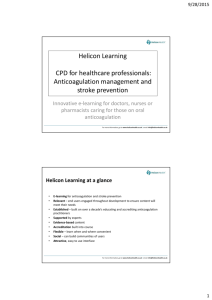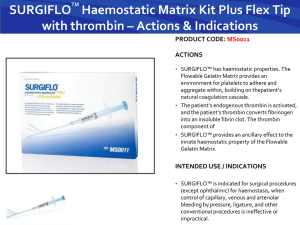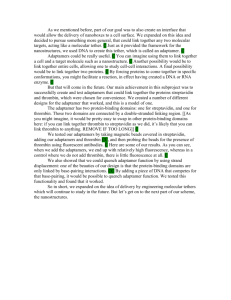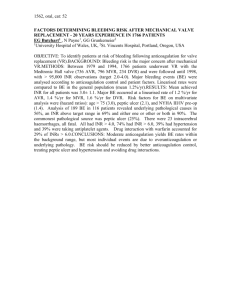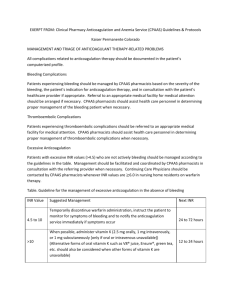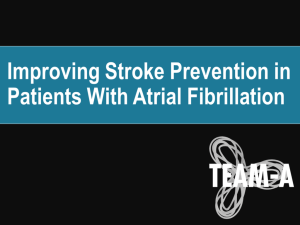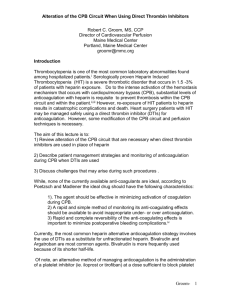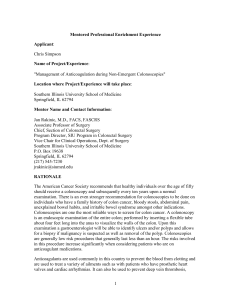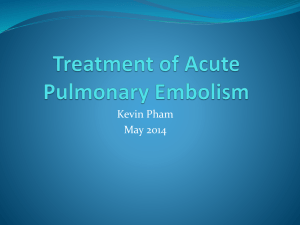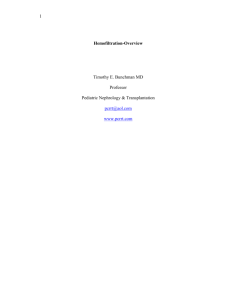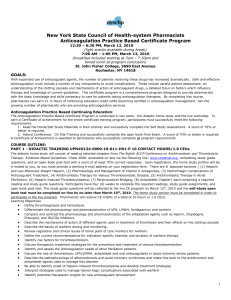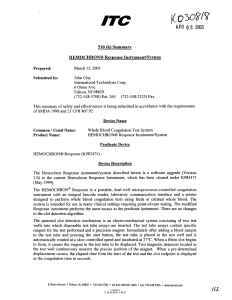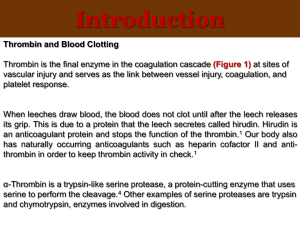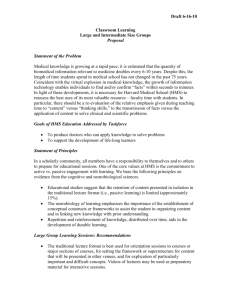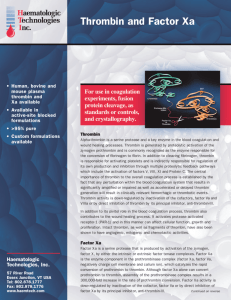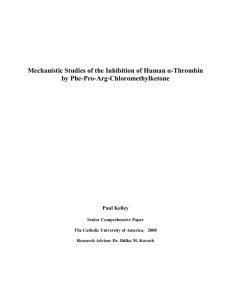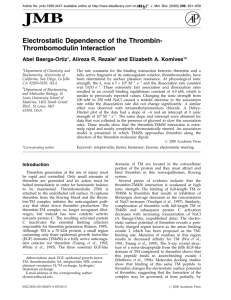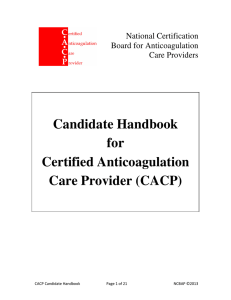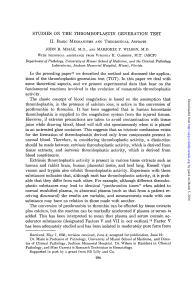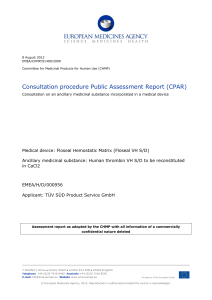Abstract HMS BSH final 171114
advertisement
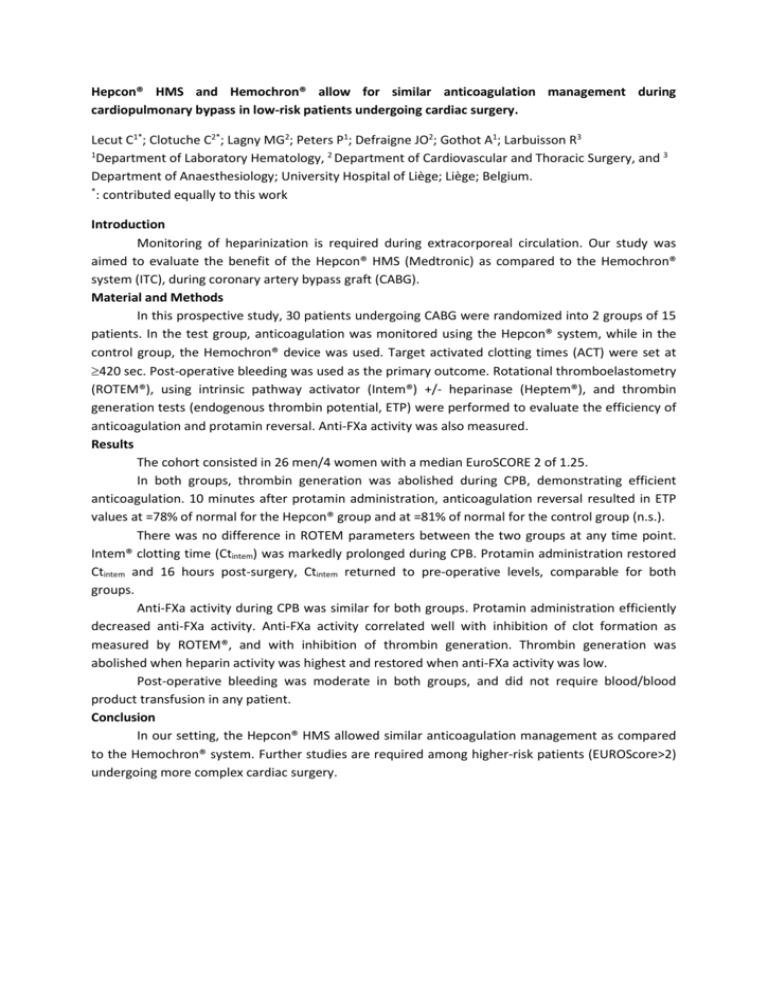
Hepcon® HMS and Hemochron® allow for similar anticoagulation management during cardiopulmonary bypass in low-risk patients undergoing cardiac surgery. Lecut C1*; Clotuche C2*; Lagny MG2; Peters P1; Defraigne JO2; Gothot A1; Larbuisson R3 1 Department of Laboratory Hematology, 2 Department of Cardiovascular and Thoracic Surgery, and 3 Department of Anaesthesiology; University Hospital of Liège; Liège; Belgium. * : contributed equally to this work Introduction Monitoring of heparinization is required during extracorporeal circulation. Our study was aimed to evaluate the benefit of the Hepcon® HMS (Medtronic) as compared to the Hemochron® system (ITC), during coronary artery bypass graft (CABG). Material and Methods In this prospective study, 30 patients undergoing CABG were randomized into 2 groups of 15 patients. In the test group, anticoagulation was monitored using the Hepcon® system, while in the control group, the Hemochron® device was used. Target activated clotting times (ACT) were set at 420 sec. Post-operative bleeding was used as the primary outcome. Rotational thromboelastometry (ROTEM®), using intrinsic pathway activator (Intem®) +/- heparinase (Heptem®), and thrombin generation tests (endogenous thrombin potential, ETP) were performed to evaluate the efficiency of anticoagulation and protamin reversal. Anti-FXa activity was also measured. Results The cohort consisted in 26 men/4 women with a median EuroSCORE 2 of 1.25. In both groups, thrombin generation was abolished during CPB, demonstrating efficient anticoagulation. 10 minutes after protamin administration, anticoagulation reversal resulted in ETP values at =78% of normal for the Hepcon® group and at =81% of normal for the control group (n.s.). There was no difference in ROTEM parameters between the two groups at any time point. Intem® clotting time (Ctintem) was markedly prolonged during CPB. Protamin administration restored Ctintem and 16 hours post-surgery, Ctintem returned to pre-operative levels, comparable for both groups. Anti-FXa activity during CPB was similar for both groups. Protamin administration efficiently decreased anti-FXa activity. Anti-FXa activity correlated well with inhibition of clot formation as measured by ROTEM®, and with inhibition of thrombin generation. Thrombin generation was abolished when heparin activity was highest and restored when anti-FXa activity was low. Post-operative bleeding was moderate in both groups, and did not require blood/blood product transfusion in any patient. Conclusion In our setting, the Hepcon® HMS allowed similar anticoagulation management as compared to the Hemochron® system. Further studies are required among higher-risk patients (EUROScore>2) undergoing more complex cardiac surgery.
